
If the Greeks were the standard-bearers of Western culture , the Minoan Civilization was the one that laid the foundations of it. It is really curious that a small island of just over 8,000 km2 was home to the most advanced culture in the entire West for nearly a millennium. There will always be detractors of these claims. But while in much of Europe rudimentary towns were built, or spectacular stone circles were elaborated. In Crete, a civilization was preparing to build a 17,000 m2 palace with almost 1,500 rooms.

recreation of the Palace of Knossos
Timeline of the Minoan civilization.
Several experts have dedicated their work to sequencing the chronology of the Minoans. Among them the British Arthur Evans , the one who spent the most time deciphering the secrets of the great palace of Knossos. Also Doro Levi , the Italian archaeologist who directed, after World War II, the Italian School of Archeology in Athens. But for the simplification and ease of understanding of it we will stay with that of the Greek archaeologist Nikolaos Plato .
- Prepalatial (2600-2000 BC) The darkest time in terms of archaeological record. But very striking due to the need to understand how a society that is more backward in the use of metals, copper or bronze, than its neighbors on the continent, is capable of developing as it did in a short time. The most evident of this time is the construction of the first towns, and the maritime domain of the men of Crete.
- Protopalatial (2000-1650 BC) The golden age of the Minoan civilization. Relatively few centuries ago they had left the caves, and had begun to work metals. How were they prepared to build those impressive palaces and decorate them with rich frescoes, or adorn them with all kinds of vessels, jewelry, etc.?
- Neopalatial (1650-1450 BC) Period of great natural disasters, marked by archeology by the continuous reconstructions in the palaces, it is thought that they were mostly earthquakes. It was the period when the explosion of a volcano swept away the nearby island of Thera. Towards the end of this period the continental Mycenaeans take control of the island of Crete.
- Postpalatial (1450-1100 BC) A new dark period in the history of Crete, the Minoan civilization disappears as it came, without making a sound. The island adopts the policy of the Mycenaeans. Knossos becomes the capital from where the rest of the island is controlled, now converted into an agricultural pantry for the mainland. The artisans, the artists or the merchants of the island are finished. The change of rite in burials from inhumation to cremation is the best sign of change.
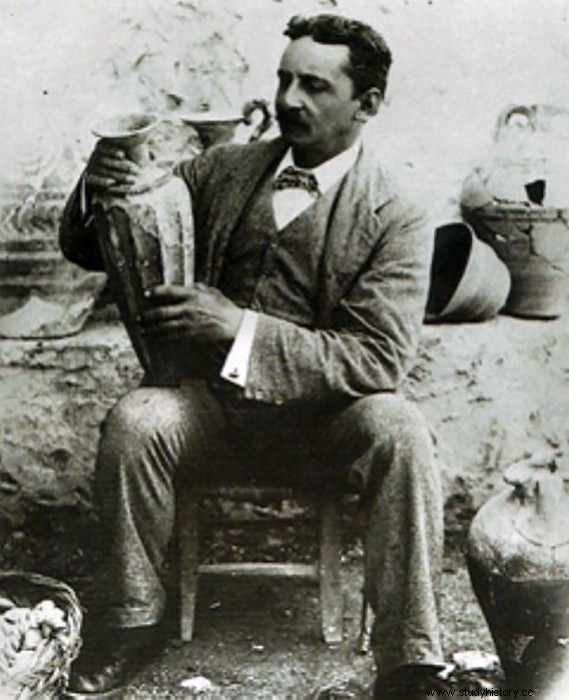
Sir Arthur Evans at Knossos
The mythological origin of the Minoans.
The Greeks, descendants in some way of the Minoans, had to look for their origin, and as usual they turn to mythology. The first great king of the Minoans was Minos , hence Arthur Evans at the end of the 19th century, baptized this new civilization as Minoan.
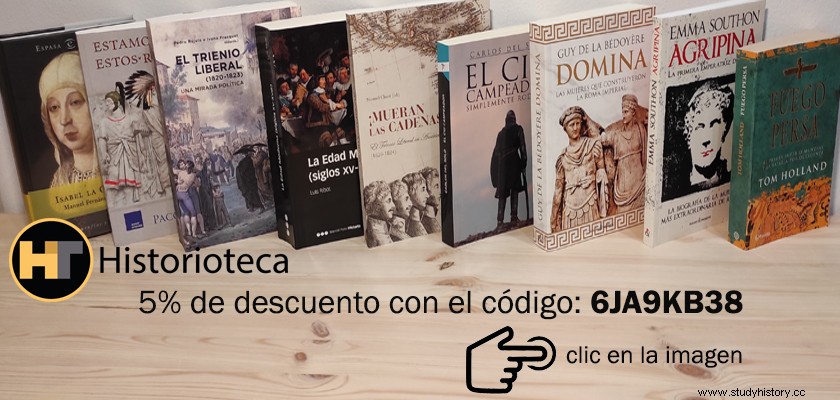
Well, Minos was one of the three sons of Zeus and Europa, the other two were Rhadamanthys and Sarpedon . For Minos, the destination chosen by his parents was the island of Crete, where he had to grow up with the king of those territories, a certain Asterio . After his death, Minos must take control of the island, but first he must overcome the opposition of his two brothers.
Minos decides to ask for help to defeat them. As a good island, he needs to dominate the seas to defeat his rivals, who better to ask for a favor than the god of the sea? This is how Minos promises the sacrifice of a great white bull God Poseidon. The only animal had to be sent to the island by the God of the Sea himself. This fulfilled his promise, the great bull arrived on the island and Minos easily defeated his rivals to become the king, that all the Cretans they needed.
But Minos didn't keep his end of the bargain. The great bull was a spectacular specimen and he decided to incorporate it into his great herd. Poseidon, gets deeply angry, makes the bull go crazy and King Minos only has the option of having him killed. But the damage was already done.
Pasiphae , wife of Minos, had been madly attached to the animal. After disguising herself as a cow, she goes to where the bull was and manages to get pregnant with it, waiting for the Minotaur, their son. Minos was ashamed and asked his faithful Daedalus to build a great labyrinth where he could hide his adulterous wife and the Minotaur for life. It is not difficult to see that the Palace of Knossos will be the great labyrinth where they were locked up.
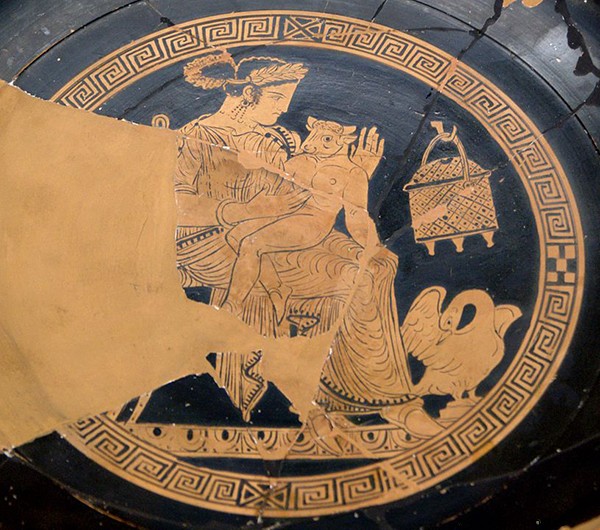
Pasiphae and the Minotaur
Knossos. Cetra's Palace.
You cannot understand the Minoan civilization without knowing its most significant palace. Many eyes were fixed on those impressive archaeological remains in the 19th century. Of all of them it is necessary to name the native archaeologist, Minos Kalokairinos , which caught the attention of the greats of the time, such as the German Heinrich Schliemann . But he would be a Briton, a disciple of the previous one, Arthur Evans, who landed on the island, after five years of negotiations to buy the mountain that contained the remains of the impressive palace. He then spent more than 30 years bringing it to light. Of course, the reconstruction of the British has not left anyone indifferent. Some applaud it, and others defenestrate it, by supplanting the ancient Minoan wooden columns, for one made of cement painted red. At least I respect the color, its defenders breathe a sigh of relief.
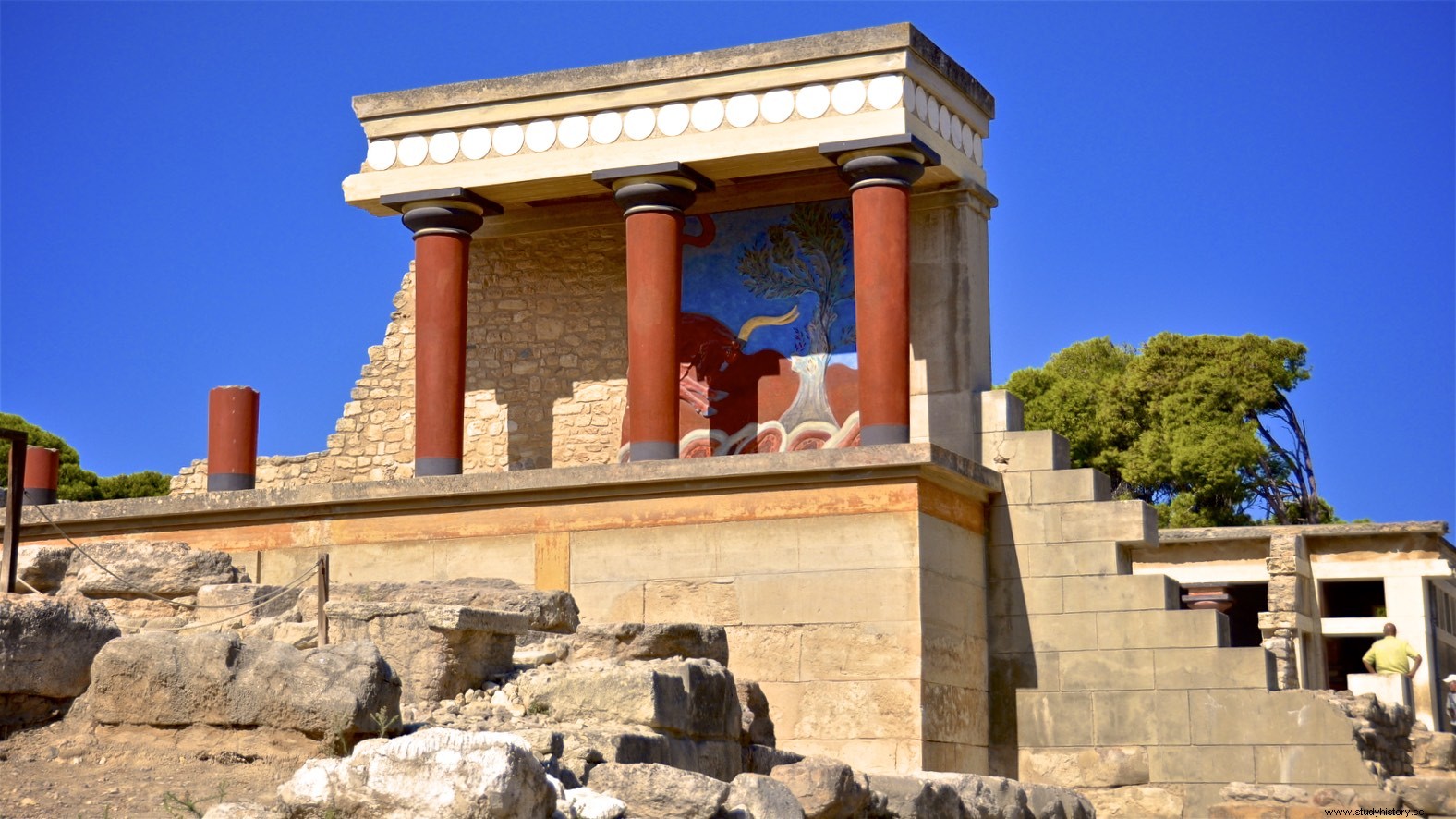
The Palace of Knossos and the controversial reconstruction of Evans
As has been pointed out, the figures of this palace go beyond contemporary logic. 17,000 m2, with nearly 1,500 rooms, or a central patio of 1,400 m2 where the most important events of the palace took place. In short, that place was the political, economic and religious center of the community.
Around the central courtyard were the main rooms of the palace. Among them the throne room , with the same attached to one of the walls. Around the brightly decorated room there are different water basins, which must have been used for some religious ritual. The Queen's Megaron , this had its own room decorated with a large fresco of dolphins, along with other smaller rooms dedicated to the bathroom or toilets.
One of the most striking aspects is the large number of rooms used for storage, with large pithois that could have stored more than 250,000 l. Without a doubt, it was the destination of all the production around the palace.
Other palaces of the Minoan civilization.
Knossos was the largest palace, but by no means the only one on the island. The orography of the land favored nearby communities, but separated by geographical accidents that made communications difficult, making the sea the most efficient means of communication.
Phaistos.
The south of the island was dominated by the palace of Phaistos, which overlooked the Mesara valley from a large natural terrace. It had about 8,300 m2 and began to be built around 1,900 BC. C., a century after Knossos. As the latter suffered destruction around the year 1,700 a. C. and was rebuilt giving it a greater extension. The lord of Festos dominated the maritime control of southern Crete, trade, carried out from two nearby ports, was his main activity. Instead of one, he had two patios, one on each side of the building. The rooms similar to Knossos, that is, rooms for the king and queen, bath rooms, rooms and a large number of warehouses and workshops.
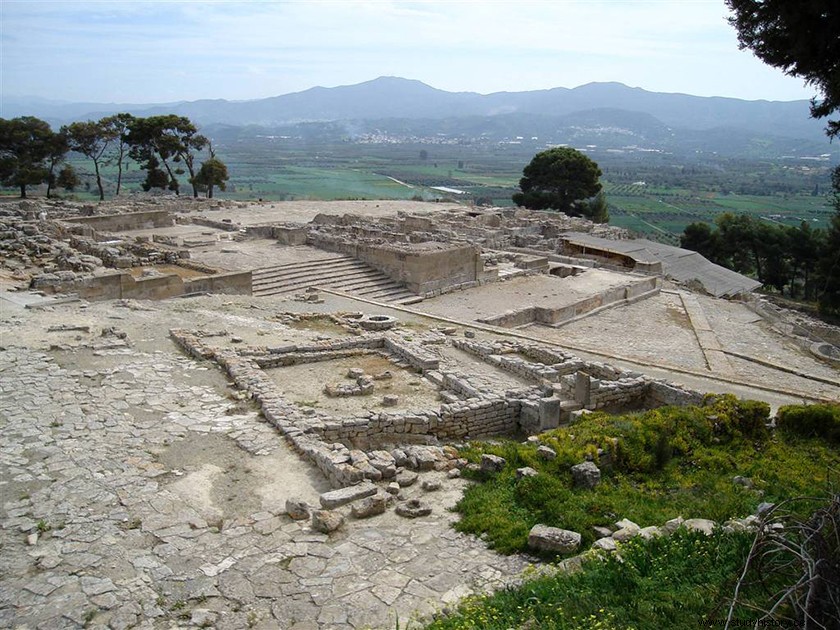
Phaistos site
Kato Zakros.
This palace is located in the east of the island, its construction around the year 1,600 a. C., on the remains of a previous settlement, is later than Knossos or Festos. Its main function, trade with the East, its strategic position elevated on a beach, makes us think of it. The structure was very similar, to date it has not been completely excavated, hence some data on the total extension are missing.
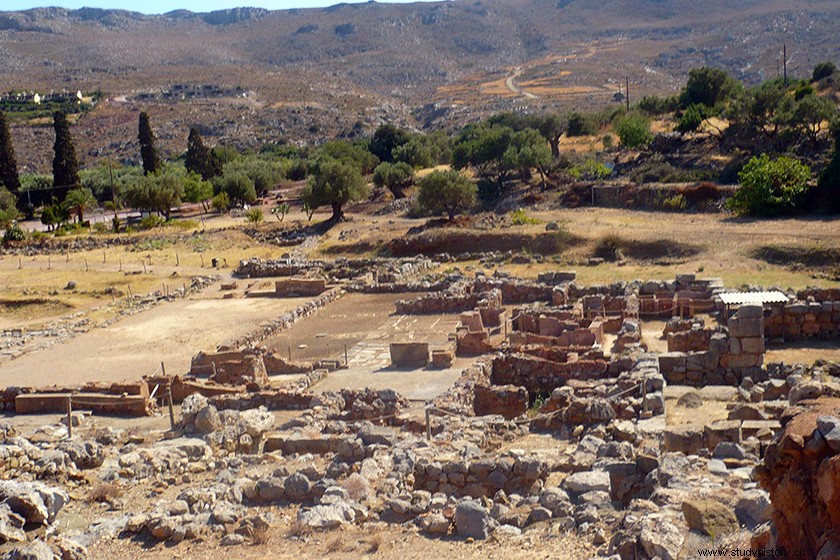
Kato Zakros site
Mallia.
The fourth great palace of the Minoans is found in the center of the island, halfway between Knossos and Zakros. His mission within Minoan society must have been that of agricultural producer. A main aspect that stands out from his study is the large warehouses that must have been used to store grain crops, but mainly oil and wine. On the other hand, the few spaces for craft workshops stand out.
Apart from those named, which are the most important. Other palaces have been located on the island, such as:Hagia Triada or Cidonia. Cities like Tylisos or Gournia. And even religious sanctuaries like those of Mount Louktas.
The writing of the Minoan civilization.
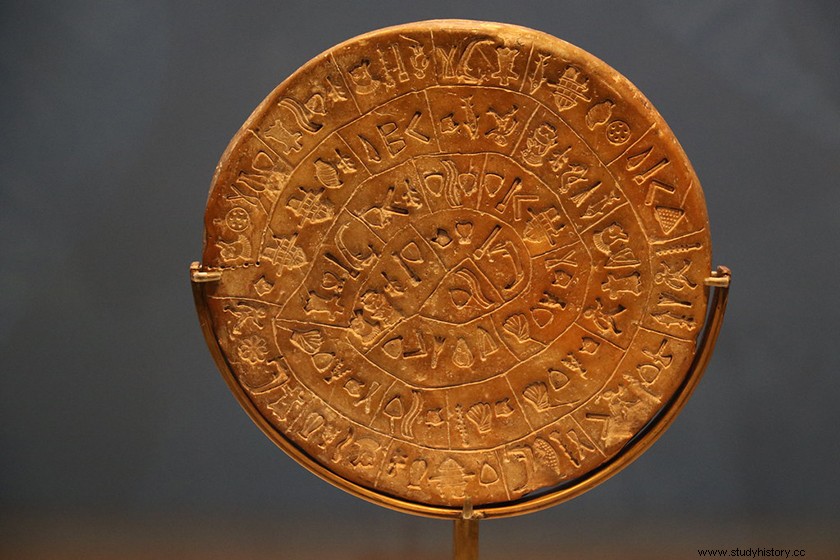
The Phaistos disk, the great question mark of the Minoan people
It is said that when a civilization wrote, it entered history. The Minoans wrote, but only one of the three ways they had to communicate through writing has been deciphered. It is noteworthy that the Minoans were not particularly aware of writing to promote their culture, as for example in ancient Mesopotamia. Rather, it was used, almost entirely, as a commercial tool. The typical tablets were not kept, they were not even cooked for maintenance, when they were not needed they were thrown away. The salvaged ones usually came from fires that destroyed a complex, and therefore were of recent use. There are also some documents written on bronze plates or stones, more consistent materials over time, but they are the least common.
- Hieroglyphic writing (2000-1650 BC approx.) . Presumably it was the first form of writing of the Minoans. The problem is the few pieces found of it, which prevent ensuring its authenticity, even more so its translation. The most famous of the finds from that period is the Phaistos Disc, a 16 cm flat clay disc with pictographic characters on both sides. Its study is much discussed, for some it is native, for others it is imported. The problem is that it does not resemble anything found, neither in Mesopotamia, nor in Egypt, the two great contemporary cultures. In short, a true mystery.
- Linear A script (1750-1450 BC approx.) The only thing that can be guaranteed about this writing, without fear of being too wrong, is that it was the writing of the men and women who created the spectacular Minoan civilization. We can only speculate that it was invented by the Minoans to capture their language in writing, if it had been imported from the East, they would have written in cuneiform. It is true that the findings of this type of writing are very scarce compared to Linear B, which we will discuss below. Hence, its decryption, so far, has not been possible. It is a syllabic, horizontal script written mainly from left to right.
- Linear B script (1600-1100 BC approx.) The most prolific throughout the island and the rest of Hellas. That is its main unknown, it is the quintessential written language of the Mycenaean people. Did they invent it on the mainland or did they copy it from the Minoans? It is an interesting puzzle to discover. When Linear B was deciphered in 1952 by the British Michael Ventris, all eyes were on Linear A, many of the syllabic elements matched one another, but it was impossible to read this last script in a known language. Hence, the Minoan script is currently one of the great mysteries to be solved, a mystery that can provide interesting data on the birth of Western culture.
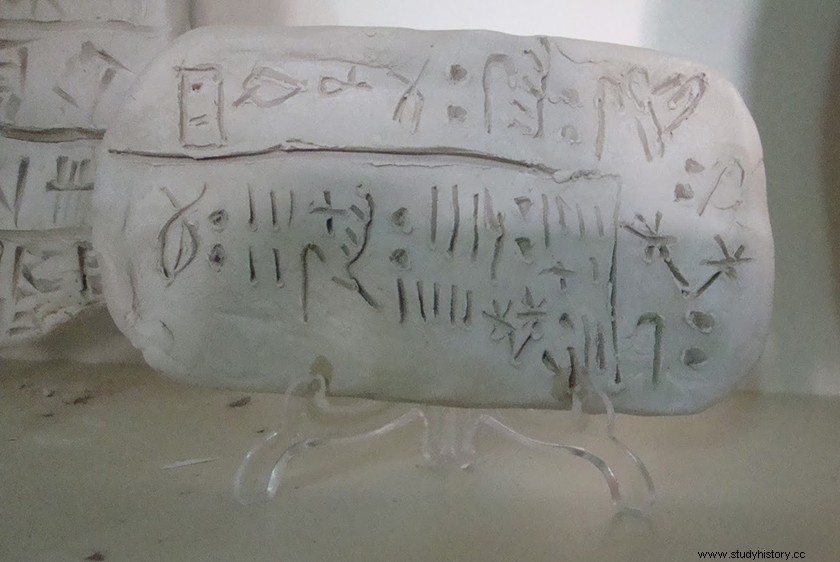
Hieroglyphic writing found in Phaistos
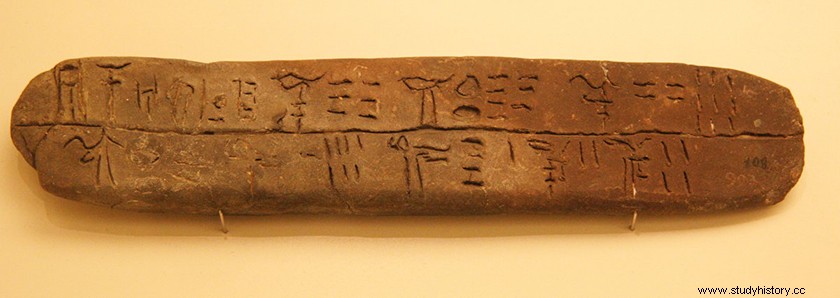
Linear B found at Knossos
The art of the Minoan culture.
The Minoans were artists. They built from enormous palaces to imposing tombs, in all of them they gave us samples of an art that reflected the way of life, not only of their leaders, but of the people in general. Art is reflected everywhere, from a palace to the glass of a humble dwelling, everything is filled with color and an exquisite love for nature and life.
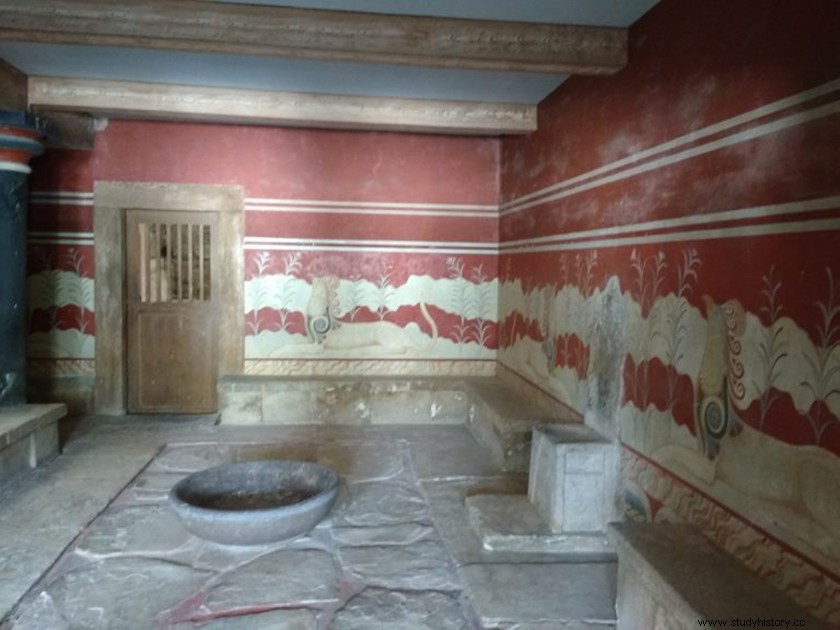
Knossos throne room
Undoubtedly the maximum expression of this art was the paintings on its walls . The Minoans knew how to take advantage of the natural elements that the island offered them. From the limestone they extracted the necessary lime to plaster the walls, these were subjected to two layers of plaster, the first thicker and the second finer and usually reddish. This way of working was from the first buildings attributable to this culture. Numerous frescoes have already been found in the palaces that embellished their walls. Bare-chested men, beautiful women, scenes from everyday life, or numerous animals and plants were the motifs alluded to in these paintings. The colors, all of them very vivid, were also made after crushing the stones of the island.
One of the most spectacular works was the so-called “Prince of the Lilies ”. A man with long dark hair, a wasp waist, a naked torso and clothing that could remind us of the ancient Egyptians. The technique of elaboration of it was on relief, it was very unusual at the time.
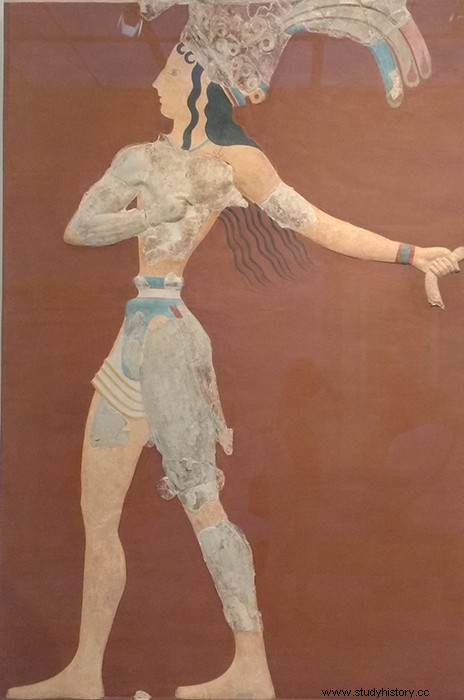
Prince of Lilies
Regarding the sculptures the small size of the pieces stands out, probably dedicated to personal use. They were made of different materials, such as clay, ivory, or copper, among others. It is necessary to point out that the Minoans had specific workshops within the palaces for the elaboration of these products. The most famous of all the sculptures were some statues representing "Serpent Goddesses", it is believed that they could have been priestesses of the community.

Snake Goddesses
Regarding ceramics Of the Minoans, it should be noted that it evolved rapidly, since, during the construction period of the first palaces, the wheel and ovens began to be used. The pieces had a great variety, from very rich and delicate tableware with a thickness of 1 mm, which archeology called “eggshell”, to enormous pithois taller than a man with rich engravings. As in the case of sculptures, there must have been large workshops from which very defined products came out. One of the best examples was a pottery called Camarés , which stood out for its colors; ocher or mustard backgrounds and bright decorations in red, orange, black or white.
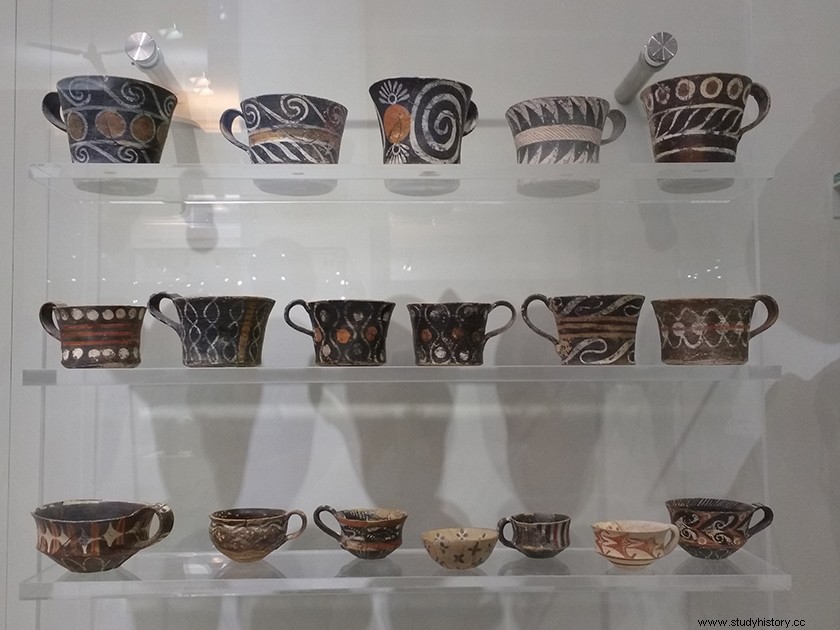
Ceramics from Camarés or Kamarés
The religion of the Minoan culture.
The Minoans did not build temples. Their religion had as its main framework the natural environment, in open-air sanctuaries, as well as in the many caves on the island. In many of them the remains of ashes have been found, along with the bones of animals such as oxen, sheep or goats. The double-axes known by the name of "labrys" were one of the symbols most represented by the Minoans, it can be speculated that they were used for the sacrifice of animals. These sacrifices were later reproduced in the palaces, where the usual typical altars for this purpose have been found.
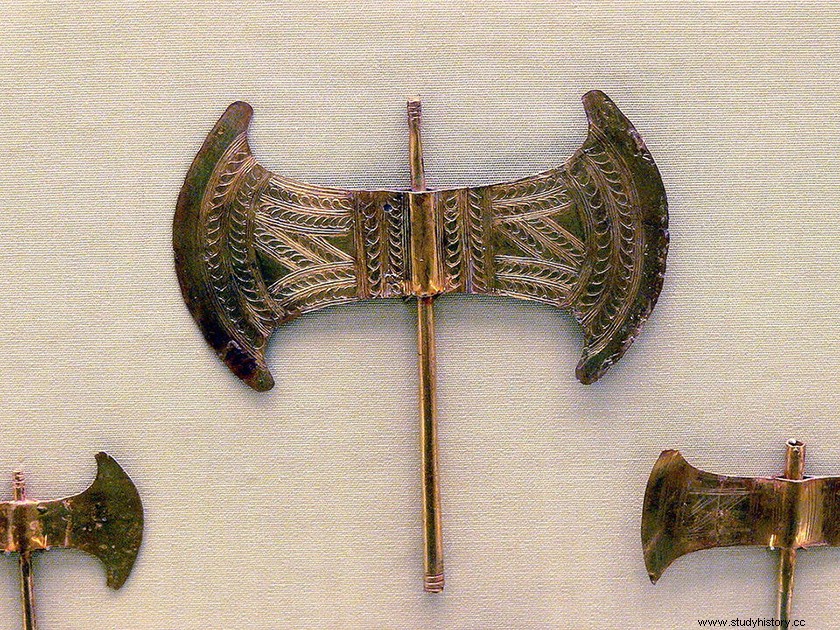
Minoan Labrys
In Minoan Crete the role of the priest fell to women. In all probability these acted as intermediaries between human beings and the gods. In a sarcophagus found in Hagia Triada these priestesses appear presiding over the procession that carried the offerings. It is thought that they were even in charge of sacrificing the animals, by the way, one of the most sacrificed were the bulls, which mythologically through the figure of the Minotaur reveals some type of fertility cult. Also note that despite being a controversial issue and on which experts do not agree, the Minoans were able to sacrifice human beings.
The farewell rite par excellence of the Minoans was the burial. There was no unanimity on the place of burial. For example, young children were buried in the same houses under the pavement, or in a crouched position inside the pithois. There were also necropolises outside the palaces, with large megalithic tombs, or simply lined up in collective rectangular tombs. The most important citizens ended their days in decorated sarcophagi surrounded by numerous trousseaus.
Where did the Minoans go?
The Minoans were not a warrior people. No walls have been found in any of the palaces, that is, the coexistence on the island between the different lords or kings of the palaces must have been by pure peaceful logic. All the signs of destruction in the palaces come from the field of natural disasters, one very clear around 1,700 BC, another quite evident two centuries later.
Around 1450 B.C. Mycenaean records appear on the island. Along with them, the palaces are burned and destroyed, with the exception of Knossos, which will become the seat of the new power on the island. While the Minoans fade away, Mycenaean customs appear on the island, including cremation, a clear change in religious identity. As a curiosity, but of enormous significance to call the Minoans peaceful, the oldest iron sword that appears on the entire island is about the year 1,300 BC.
The Minoan people were subdued by force from the Mycenaean warriors, it is easy to guess that some of their customs passed to them, and from them to the Greeks. After the Mycenaeans came the Dorians, who further subjugated the Minoan people with the definitive destruction of Knossos, the last palace. Now yes, the island of Crete, which had seen the birth of Western culture, plunged into the ancient Neolithic. Converted into a town of farmers who decided not to devote themselves to war, and will remain to pay their tributes for the years of the years to their children, the Greeks.
More info:
The Empires of the Ancient East. The end of the second millennium. E. Cassin, J. Bottero, J. Vercoutter.
Universal Ancient History I (Near East, Egypt, Crete and Mycenae). Ana Maria Vazquez Hoys. Ed. Sanz and Torres, 2009.
